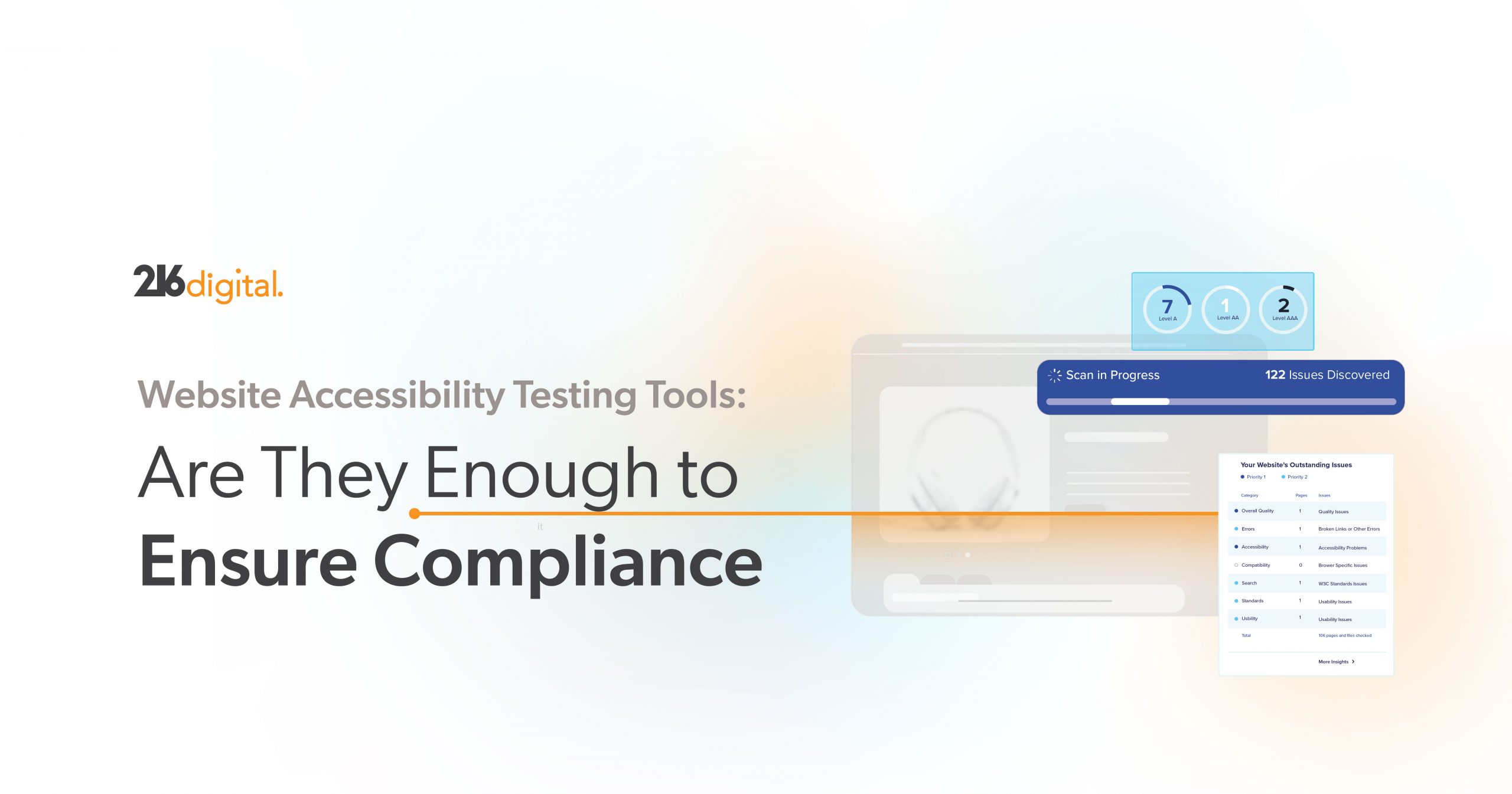As the internet continues to grow and evolve, the importance of website accessibility becomes ever more crucial. A website’s accessibility is not just a matter of convenience but a matter of civil rights as well. This is why website accessibility checkers have become a popular tool for many web designers and developers. They help identify potential barriers that could make a site difficult for those with disabilities.
However, while website accessibility testing tools are a great starting point, they are not a comprehensive solution for ensuring website accessibility. Relying solely on website accessibility testing tools can be a dangerous mistake that could leave your website inaccessible to a significant portion of your target audience.
What Are Website Accessibility Testing Tools?
Automated website accessibility testing, such as Lighthouse, WAVE, and Firefox Inspector, automate the process of checking a website for accessibility barriers. These tools can quickly scan a website and identify potential accessibility barriers, such as missing alt text, improper header structures, and broken links. The results from these tools come in the form of a report. This can be used as a starting point to improve accessibility.
Do Website Accessibility Testing Tools Provide False Sense of Security?
Website accessibility testing tools are valuable in identifying potential barriers to accessibility. However, it’s important to note that website accessibility testing tools are not perfect.
Limited Detection of Web Accessibility Barriers
Automated testing tools are limited by the algorithms and data sets they use to identify accessibility issues. As a result, they can only detect what they are programmed to and might miss some critical accessibility barriers. For example, website accessibility testing tools cannot test for keyboard accessibility, essential for individuals who use assistive technology to navigate the web. In addition, automated testing tools can only detect about 30% of accessibility issues. The remaining 70% of barriers can only be detected through manual testing by a person.
This is why passing website scans can provide a false sense of security if a manual audit is not included as part of the accessibility review process. By incorporating a manual accessibility audit into your review, the pitfall of your website passing one or more automated accessibility checks but still be non-compliant and inaccessible can be avoided.
Inaccurate Results and False Positives
There’s another potential issue to remember when using automated web accessibility testing tools, inaccurate results or false positives. This occurs when an accessibility test identifies a barrier that does not exist, leading you to fix issues that are not necessary.
What are False Positives?
Automated accessibility tools analyze patterns within your website’s code and markup. Most tools compare your website’s code to the international standard for digital accessibility, Web Content Accessibility Guidelines (WCAG).
Some WCAG guidelines have simple pass-or-fail resets. For example, WCAG requires alternative text for non-text content, such as images. If an image does not contain an alt tag, that is considered a “fail.” However, other issues that require a deeper understanding of context are limited to AI tools, which result in false positives. For example:
- Some images, such as logos and dividers, are purely decorative and do not require alt text. However, they must be implemented in a way assistive technologies can ignore. WCAG Success Criterion (SC) 1.1.1, “Non-text Content,”
- Purely decorative text or low-contrast logotypes do not violate WCAG’s color contrast requirements. However, automated tools can not determine what text qualifies for these exceptions. WCAG 2.1 SC 1.4.3, “Contrast (Minimum)”
- Content that contains the WAI-ARIA aria-hidden attributes. While WAI-ARIA aria-hidden attributes are not also necessary, there are legitimate reasons to use aria-hidden to hide content from AT.
While this is not a comprehensive list, many WCAG criteria have exceptions for certain types of content. Unfortunately, the WCAG guidelines are to complex for automated tools to provide accurate feedback on all accessibility barriers. However, the purpose of accessibility is to accommodate real users, not AI tools.
Don’t Rely On Web Accessibility Testing Tools Alone
While web accessibility testing tools are beneficial, they should not be relied on alone. Instead, automated tests need to be combined with a manual review from a web accessibility expert to remove all accessibility barriers.
Manual Audits
Manual audits are more thorough and time-consuming, but they provide a more accurate assessment of website accessibility. A manual review involves evaluating a website by using a combination of tools and human judgment. It consists of testing a website using various assistive technologies. This includes screen readers, keyboard navigation, and magnifiers, to simulate the experience of individuals with disabilities. Manual testing can help to identify the remaining 70% of barriers that automated testing tools cannot find, such as poor alt tags, confusing navigation, and inaccessible forms.
A manual review can also ensure that website accessibility guidelines are being met. For example, the WCAG guidelines state that websites must be perceivable, operable, understandable, and robust. A manual review can ensure these guidelines are met by evaluating the website’s content, structure, and functionality.
In Conclusion
Website accessibility testing tools and manual review are crucial for ensuring web compliance. While website accessibility testing tools help identify potential accessibility issues, a comprehensive manual review is necessary for full accessibility. In addition, manual reviews can identify barriers that automated testing tools cannot and ensure that website accessibility guidelines are met.
In conclusion, ensuring a website is accessible to everyone is not only a matter of convenience but also a matter of civil rights. A combination of website accessibility testing tools and manual review can help to ensure that websites are accessible and compliant with WCAG guidelines.
For guidance with your accessibility initiative, schedule an ADA Strategy Briefing today to connect with a web accessibility expert at 216digital.








